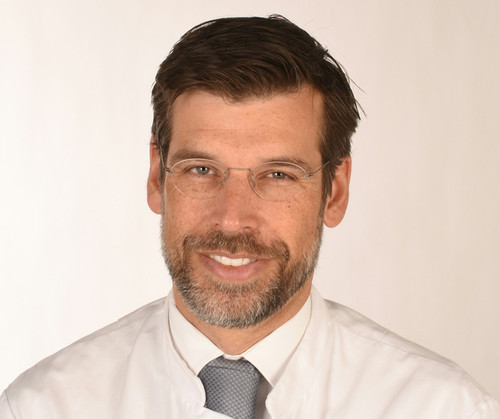Pregnancy Complications
Infant- and Family-Centered Developmental Care
Respiratory Infections
Neonatal Eye Health
Hygiene
Rare Diseases

An interview with Professor Armin Wolf, Deputy Hospital Director, Eye Hospital, Ludwig-Maximilians-University Munich
Retinopathy of Prematurity (ROP) is a condition affecting the eyes of very preterm infants. It is characterized by abnormal development of blood vessels in the retina—the light-sensitive layer at the back of the eye that sends visual signals to the brain. When detected early, ROP is usually treatable, and blindness can be prevented. However, ROP is not just an acute condition—it can also have long-term effects on vision.
In this expert interview, we speak with Professor Armin Wolf to learn more about the lifelong impact of ROP and the importance of ongoing follow-up care.
Question: Professor Wolf, is follow-up care for the eyes important for all preterm infants, or only for certain groups—such as those who were treated for ROP? And why?
Professor Armin Wolf:
We know from various studies that there are risk factors for developing ROP in preterm infants. However, we know very little about the long-term consequences as these children grow older. That’s why there is a screening program in place until the infant reaches normal gestational age. After that point, follow-up is recommended based on the findings.
If we look at sequelae occurring in adulthood, they don’t necessarily depend on whether the patient was treated during the critical ROP phase. That said, we also have to consider that ROP treatments have evolved significantly over the past 40 years. So, continued research on long-term outcomes—often referred to as "adult ROP"—is still very much needed.
Question: How long should these babies have their eyes checked, and how often?
Professor Armin Wolf:
According to current German ROP screening guidelines, continuous follow-up is recommended after the infant reaches normal gestational age, particularly for preterm children with a birth weight under 1500g or a gestational age under 32 weeks.
For those born between 32 and 36 weeks, regular eye exams are advised until age 6. However, every eye—and every patient with ROP—is different, so follow-up should be individualized. If there are additional health concerns, the monitoring intervals may need to be shorter, as it is not always easy to assess the retinal condition.
With the advent of new medical treatments, we’ve seen rare cases of late ROP reactivation, which makes identification and follow-up critical. Currently, we have very limited data on long-term outcomes of ROP patients. We do know that they are at higher risk for conditions like retinal detachment, glaucoma, and other ocular pathologies. Still, we lack enough data to draw firm conclusions.
What does seem clear is that an eye that has gone through the active phase of ROP, regardless of treatment, remains a “special eye”—even in the context of future treatments. Therefore, it's essential for a treating surgeon to know that a patient was born preterm, as birth weight also plays a role in determining individual risk.
Question: What is done during an eye follow-up exam after the baby has reached its due date, and does it hurt?
Professor Armin Wolf:
Generally speaking, these examinations focus on the same structures that are checked during the active phase of ROP in the NICU. During the exam, the pupil is dilated and the fundus (the back of the eye) is examined.
Most of these patients are already used to ophthalmic exams, so a standard eye exam at the ophthalmologist's office is usually sufficient. Only in a few cases, or if a potentially significant finding is detected during the standard exam, the procedure must be done under general anesthesia to rule out serious concerns.
Routine exams also include testing visual acuity, measuring refraction (to determine the glasses prescription), and assessing whether there’s a need to patch one eye to ensure balanced development of both eyes.
Invasive procedures are generally not necessary.
Question: Who can examine the eyes of these babies and later, these children?
Professor Armin Wolf:
In general, these follow-up exams can be performed by any ophthalmologist. However, if the ophthalmologist feels uncomfortable or if there is a history of ROP, referral to a retina specialist or a specialized center may be a good idea.
Question: Regarding long-term follow-up, what is your advice for children who developed ROP?
Professor Armin Wolf:
We tend to focus on ROP patients especially in their early years, when follow-up is mandatory. However, as these children grow older, the fact that they were born preterm is often forgotten, and only a few continue with regular follow-up care into adolescence or adulthood.
I recommend lifelong follow-up, with intervals tailored to the patient’s clinical findings, in order to prevent complications such as retinal detachment. For example, in cases of uncomplicated ROP, I typically schedule annual follow-up exams.
This interview with Professor Armin Wolf was originally conducted and published in 2019. While the medical context remains relevant, newer research or updated guidelines may have emerged since then.
© 2025 GFCNI. All Rights Reserved.